Walking into Xizhou Ancient Town, Dali
Xizhou Town is located in the north of Dali City, Dali Bai Autonomous Prefecture, northwest of Yunnan Province. The town has hundreds of Bai residential buildings with their own characteristics in the Ming, Qing, Republic and contemporary periods. Viewed from a distance, it looks like a simple and elegant city, but more like a huge museum of residential buildings. The unique shape and the almost perfect structure give people a sense of solemnity and power yet yet light and lucid, simple and elegant yet free and free texture and beauty.

There are no Chenghuan Village walls around Xizhou Ancient Town, but there are gates in the east, west, north and south. The most eye-catching one is Zhengyi Gate in the west, Zhengyi Gate, which is also a landmark building in Xizhou Ancient Town. Also known as Kuige, during the imperial examination era, scholars would come here to pray for blessings and medals before the exam. Today, it is said that some candidates are still brought by their parents to Kuige to pray to Master Kuixing before the exam.

As soon as you enter the ancient town, you can see the two trees at the head of the village with lush branches and leaves. This is a kind of arbor rarely seen in northern my country. Its common name is also called Evergreen, and its scientific name is "Alpine Banyan". Because the Bai people believe that the Daqing tree is a symbol of the prosperity of a village, they also call it the "Fengshui tree".

The two ancient trees at the head of Xizhou Village are said to be trees with one shade and one sun. One tree germinated and the other fell leaves, which cycle and prosper alternately; one tree bears fruit and the other never bears fruit. During labor breaks, villagers often take a nap under the buds of trees.

Then what comes into view is the archway of [Dexinfang], which houses Tajing Primary School in Xizhou. From the archway built by the school and the inspirational school motto written on the wall, we can see the origin of the ancient and modern culture of Xizhou Ancient Town.

Opposite you is Ziyunshan Temple. The seemingly inconspicuous small temple actually dates from the Ming Dynasty. The current building was built in the Qing Dynasty


There is a Ziyunshan Temple in Xizhou Town. It is said to be a temple, but it is actually a place where the three religions of Taoism, Buddhism, Confucianism and Confucianism are integrated. There is a hall in it that also houses Emperor Guan.


This temple is not as majestic as those ancient temples in terms of architecture and statues. It is as dilapidated as the houses in the town and full of fireworks



The Xizhou Seniors Association General Association is also here

Step on the ancient bluestone slabs and walk through the ancient alleys to find the history left behind in the mottled light and shadow.

Xizhou Ancient Town has a history of more than a thousand years and is one of the remaining ancient cities in Nanzhao Ancient City. With gray walls and white tiles, three squares and one illuminated wall, the unique architectural features of the four and five wells have cast a mysterious veil on this simple town.


In Xizhou Ancient Town, you can encounter many well-preserved deep courtyards. Therefore, if you want to look at Bai folk houses, you should come to Xizhou.



There are very wonderful cornices and arches in the Bai houses in Xizhou. The typical three-drop-water gate building system. You can see that when it rains, raindrops will pass through the first and second cornices before falling to the ground. This also means that money is rolling in. There are many exquisite murals on the entire gate building, colorful carvings, which are very beautiful.

The old house in Xizhou is set against the sky, looking ancient and new. Any house looks so beautiful when photographed.

Bicycles and mottled old walls in the sun. This place probably condenses the essence of the entire Dali. Mr. Lao She was once called a "miracle" in Xizhou.

Xizhou Sifang Street is located in the center of Xizhou Ancient Town and is a small square surrounded by many shops. There is a stone workshop "Civilization Workshop" erected here. This place was originally called the "Titling Workshop". It was built after several Jinshi scholars appeared in the town in the Ming Dynasty. At that time, all villagers who had achieved fame in the imperial examinations could engrave their names. At that time, there were nearly 100 Jinshi scholars and candidates in the Ming and Qing Dynasties who left their names on the nomination stele. The existence of Civilization Square reflects the profound cultural background of Xizhou and the importance the people of Xizhou attach to culture. It is the historical source of Xizhou's humanistic atmosphere.

Nearby is the Yan family compound. It is a deep courtyard with multiple courtyards connected. As a national key cultural relics protection unit, the Yan Family Courtyard maintains the typical Bai residential architectural styles such as "three squares and one Zhaobi","four in five courtyards","one hall and two houses (six contracts)", and "Zouma Chuanjiao Tower".

At another street corner on the left side of the central square of Xizhou Ancient Town, there is also an archway engraved with the two characters "Hanlin"


The plane seat where everyone comes takes a picture, the corner in front of the public telephone booth.
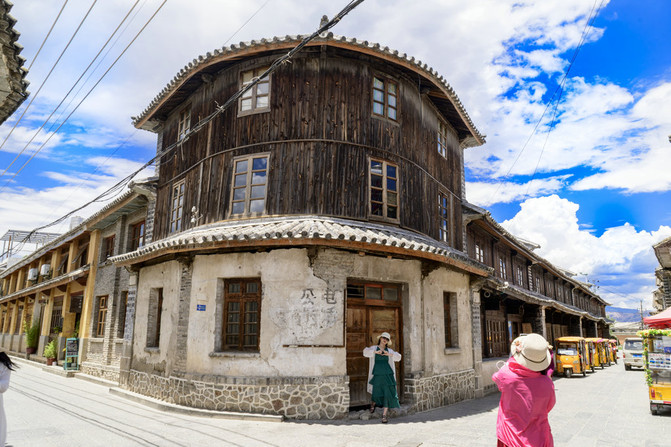
The pace of life here is very slow, and many shops often do not open or open late.

What kind of story is hidden in six doors?
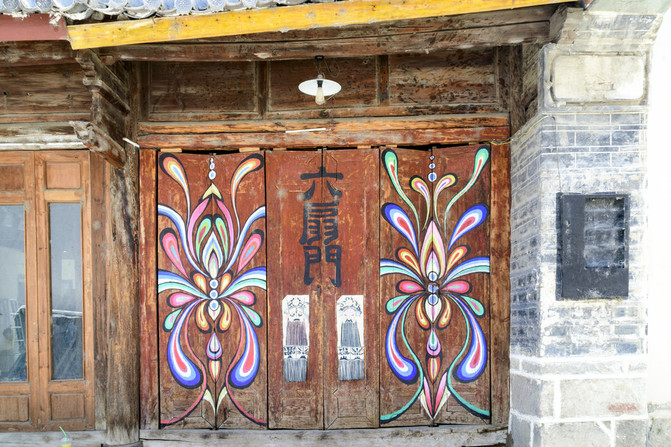
Walking outside the city, you will come to large areas of green rice fields in the fields.

The breeze blows, and the rice seedlings rise and fall like waves, which is pleasing to the eye.

Bai farmers are doing farming

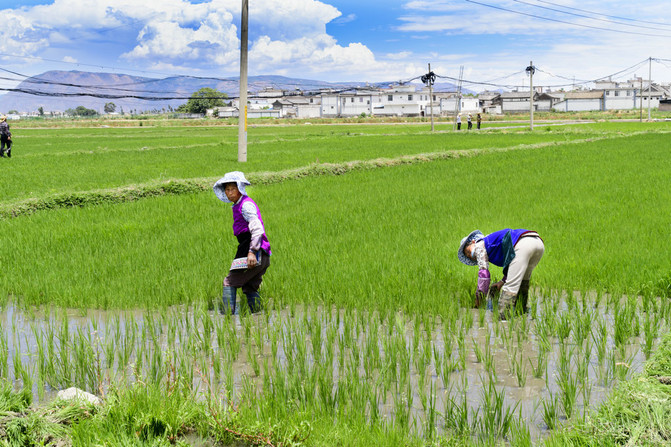
Tiange, someone is taking beautiful wedding photos here

Walking in the pastoral scenery, every time I move, I step on a rhyme. Every time my eyes look, they are a poetic picture.

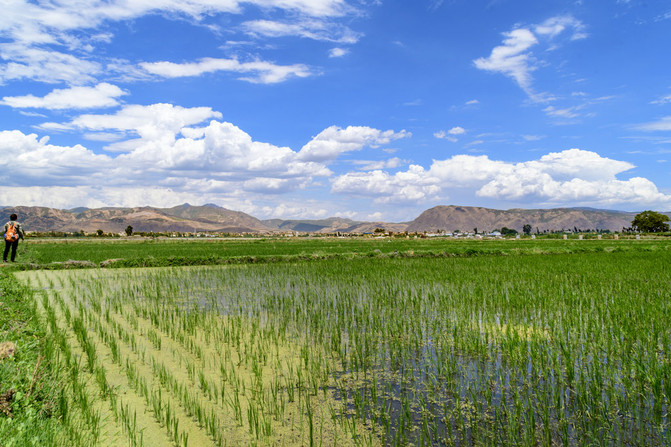
The large house built in the countryside,With conspicuous yellow exterior walls,isThere is a famous inn in Xizhou called "Xilin Garden". The name comes from "Xizhou" and "Linden".

Mr. Linden, an American who has lived in China for many years, renovated the Yang Pinxiang Courtyard, a Bai residence before liberation, and built this inn.


Yangpinxiang Courtyard was built in 1948 and is a representative building of the "Five Fushou" architectural form of the Bai people in Xizhou. Among them, the gate building is the most exquisite workmanship. It is said to be the Yang family gate building. Yang Pinxiang is one of the ethnic capitalists of the Bai people in Xizhou and created the name "Guangming".


The first step is to enter the courtyard, which is open every afternoon for tourists to visit.


The architectural design of the entrance hall of Xizhou Old House feels very complex. The convex and convex eaves and the corners of the eaves are tilted upwards. This also shows that it is not a building that ordinary people can afford to build.

Xizhou Baba is known as one of the delicacies that cannot be missed
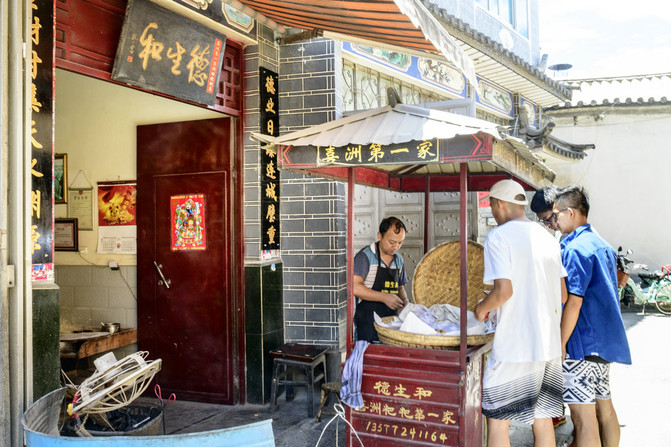
The "famous store" on Sifang Street should be the Cool Cabin, which has been open in Xizhou since 1982

Ma Nianniang's milk popsicles are still so sweet. There is a reason why the popsicles here can maintain their old taste for so many years. The boss Ma Nianniang said that for so many years, he and his wife Mr. Shi have insisted on going to the farmers 'homes to buy fresh milk for the day. After the fresh milk is taken back, it takes a long time to brew and then cooled, and the popsicles produced will be sold only after reaching the standard.


Amayin pea powder

Pea powder, also known as oil powder, is an old lady. Her son and daughter-in-law gave up their career in Xiaguan and came back to inherit her grandmother's craftsmanship. Ah Ma Ying oil powder is strong, has a good taste, and is suitable for sour and spicy...

Other accompanying photos of Xizhou Ancient Town








Previous Article:Dali self-driving tour guide: Enjoy the Erhai Lake and stay at the Internet celebrity Seaview Hotel, a place you fall in love with!
Next Article:Xizhou: Intangible cultural heritage and the joy of pastoral areas
